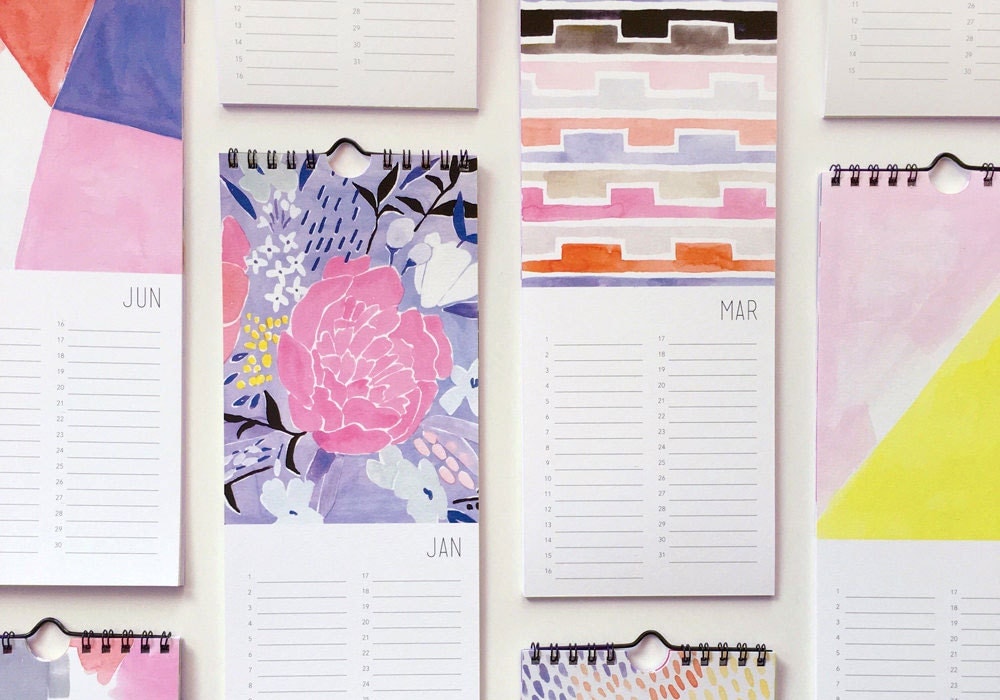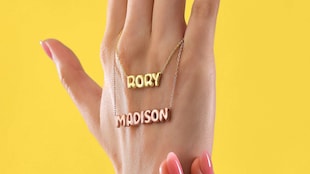I admit it — I totally judge books by their covers. In fact, one of my favorite pastimes is strolling through the bookstore and surveying all the carefully crafted compositions. And, of course, the more awesomely designed the cover, the more likely I am to pick up a book, sift through its pages and, ultimately, purchase it.
The same can be said for your Etsy shop. The more appealing and cohesive your shop looks, the more likely buyers are to browse through your items and make a purchase. Using Etsy’s tools, you can build your own carefully crafted “cover” with well-considered shop branding and images. Here are a few tips for designing shop graphics for optimal appeal.
Write a Visual Story
Just like a book cover, your shop graphics represent the essence of what’s inside. Think of designing these graphics as writing a story without words. First, consider what you want to communicate about your brand. Try jotting down a few words that describe your shop’s style. These words and concepts will serve as an outline for your visual story. Then, make decisions about colors, fonts and photo styling that are in line with the style you described.
Visual consistency doesn’t mean making your shop look matchy-matchy. Think about how your cover photo, shop icon and product photography complement each other. Using a color palette consistently in your shop is one way to create cohesion. A good rule of thumb is to choose one dominant color and two secondary colors, says Lyanne Dubon, design manager on Etsy’s brand design team. Think about what emotions colors can convey too. “Any design decision you make in your shop should help reinforce the attitude you want your brand to have,” Lyanne says.
Design a Shop Icon and Cover Photo
Although two separate graphics, your shop icon and cover photo work together to represent your brand as a whole. When someone visits your shop, these eye-catching visual elements should convey what your business is all about — in the blink of an eye.
Shop Icon: The Essentials
Your shop icon represents your shop across Etsy and should be an image that looks good in many different sizes. For example, your shop icon will be quite small when your activity appears in a shopper’s homepage feed, but it will be shown at its full size (500 x 500 pixels) on your shop homepage. Here are a few things to consider as you create your shop icon:
- Is it easily understood? Your shop icon should communicate the look and feel of your shop at a glance. A great shop icon, just like a great logo, communicates something about the ideas or passion behind your products. If you use a graphic as your shop icon, make sure shoppers understand what it depicts and how it relates to your shop. The owners of the dog accessory shop ohpopdog, for example, use an illustration of their canine model Bacon as a shop icon.
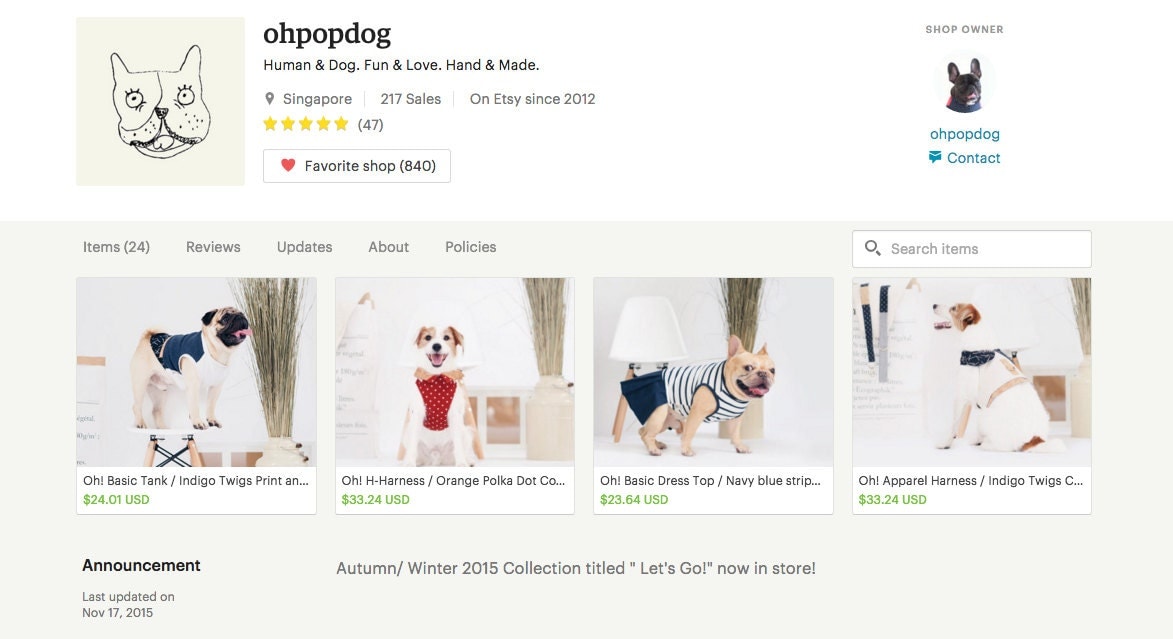
-
Can it scale down? Your shop icon should be legible, even at small sizes. A graphic that looks great on your shop homepage might not translate well at smaller sizes. Preview your shop icon in a variety of sizes to ensure your final selection works even when it’s small. Avoid using too much text in your shop icon — it will be difficult to read in small sizes.
- Is it memorable? “Simple and minimal logos and icons are going to be more recognizable,” says Samuel Sherman, a senior art director on Etsy’s brand design team. Shoppers who have Favorited your shop or purchased from you before should be able to quickly recognize your shop icon.
Pro tip: Adobe Express makes designing beautiful marketing materials and editing your photos and videos super simple. Plus, you can choose from thousands of professionally designed templates, so making social media content or branded graphics for your shop is quick and easy. Want to try it out? Etsy shop owners can get a three-month Adobe Express Premium plan trial.*
Cover Photo: The Essentials
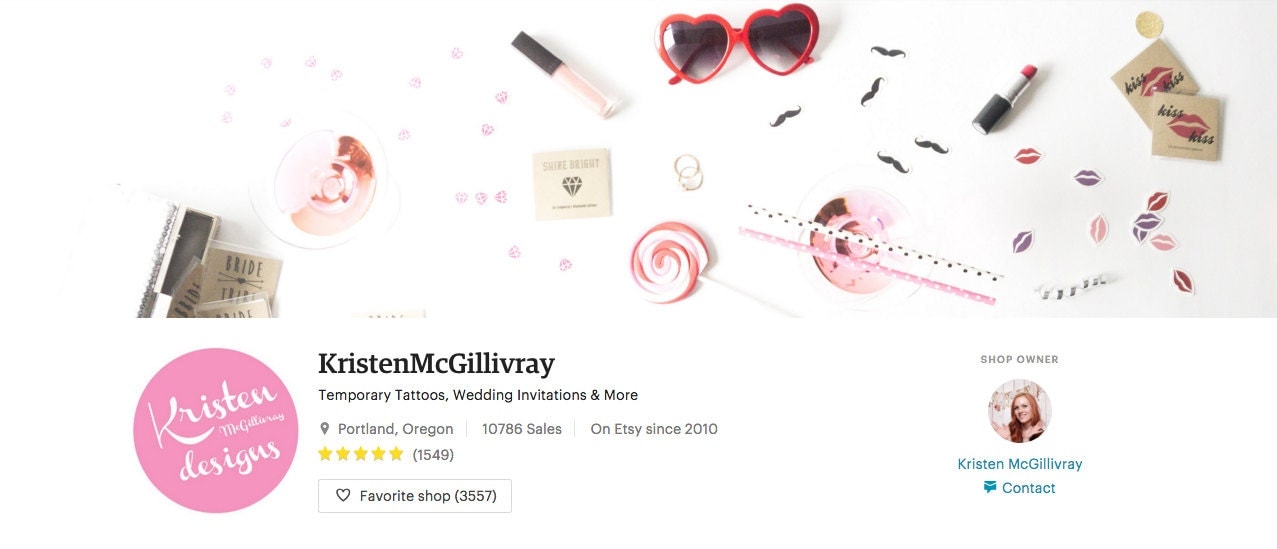
The cover photo on your shop homepage allows you to immediately immerse shoppers in your brand and products. “It’s like a billboard,” says Lyanne. “Since it’s such a large space, there’s room for experimentation.” The cover photo spans the entire width of your shop and is displayed on mobile devices and in the Etsy app. The minimum image size is 1200 x 300 pixels; the ideal size is 3360 pixels x 840 pixels. Consider these tips when creating a cover photo:
-
Highlight your best photography. Your cover photo is a great spot to show off photos of your products in action or a styled image that showcases your entire collection. “This is one area where you can see all the products in your shop come together,” Samuel says. “This gives new visitors to your shop a clear picture of your entire range of products.” Keep in mind that the space is wide and short, so think horizontally when composing your shot.
-
Use text sparingly. If you want to include your shop name in your cover photo, make it big enough to read on mobile devices and keep the text to the center of the photo so it’s still legible when the image is scaled down.
- Get creative. “Your cover photo is a large canvas,” says Lyanne. “Experiment with repeating patterns, fields of color or photos of your workspace.” Make an impact by showing off unique fabrics or designs that are representative of your products. Lisa Rupp of Arizona-based Etsy shop Lisa Rupp Design welcomes shoppers with a large, colorful cover photo that showcases the details in her gouache paintings.
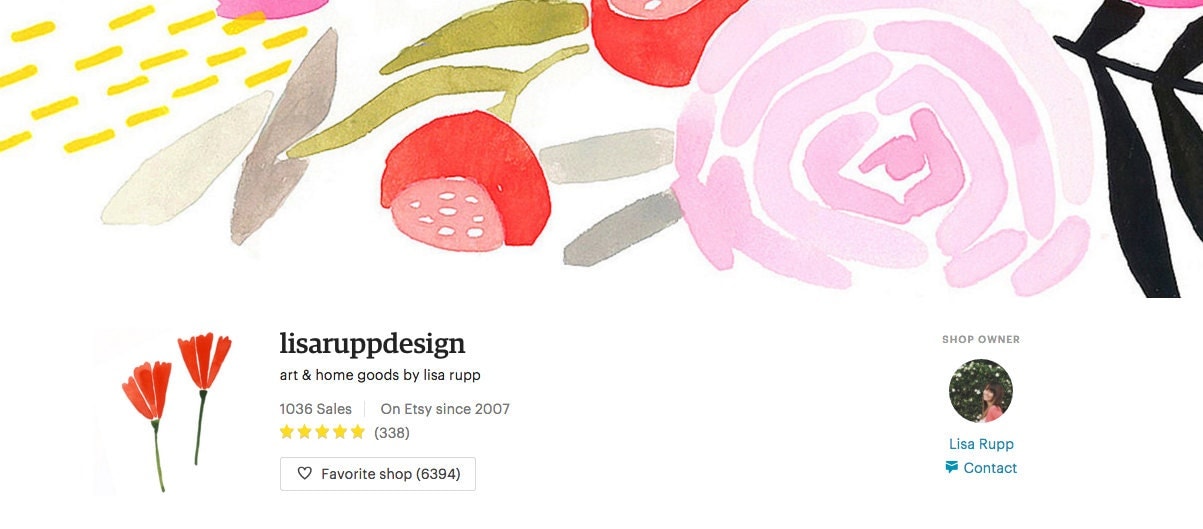
- Keep it fresh. As the year unfolds, the cover photo can be a good space for an occasional refresh to reflect changes in the seasons, gift-giving holidays, milestones and special occasions. Try to avoid changing your shop icon too frequently though; keeping that consistent can help you build a recognizable brand identity.
Introduce Yourself With a Profile Photo
Take credit for the hard work you put into your shop and build trust with buyers by using a friendly photo as your profile photo. Your profile photo, or shop owner photo, is prominently placed at the top of your shop homepage, so make sure the photograph is well-lit and clear — you want to put your best foot forward.
To ensure your profile photo looks its best, upload a square image that’s at least 400 x 400 pixels. “Photos that show your face are best,” says Lyanne. "It lends your shop some credibility and helps build trust." Since the photo is fairly small, crop the portrait tightly on your face (or faces, if there’s more than one person). A good rule of thumb: Your face should fill about 70% of the frame.
Your shop owner photo and the name that appears underneath are linked to your Etsy public profile. If you haven’t updated this page in a while, now is a good time to make sure the information there is up-to-date and a good representation of your brand and business.
Work Your Product Images
Your product photography should echo the color palette and aesthetic you established with your shop icon and cover photo.
-
Develop a photo styling palette. Backgrounds and styling for your product photos don’t have to be the same in every image, but they should feel cohesive in telling your visual story. Develop a photo styling palette with consistent colors, lighting and props to create this cohesive feel. Read How to Create a Cohesive Shop for more great photo styling advice.
- Keep perspective. If your shop sells several products that are similar in type and scale, use product photography to emphasize this. For example, Knot and Bow photographs many of their products in similar context and shooting range for a consistent visual feel across item listings.
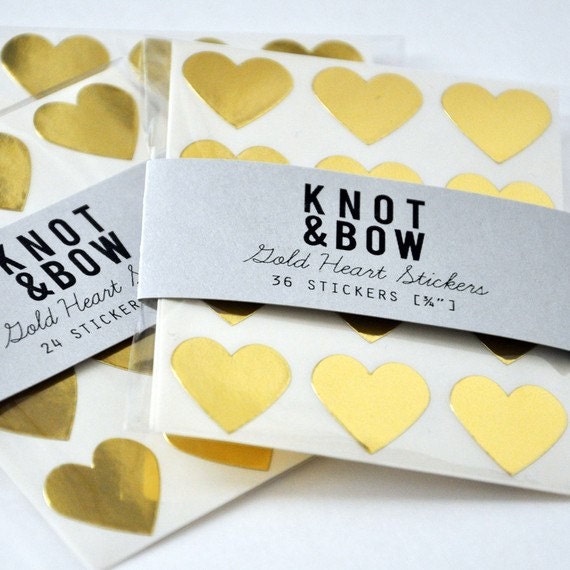
-
Mix it up. Alternatively, it could be a good idea to show multiple perspectives of the same image, especially if your item includes fine details that can’t be captured in one product shot.
-
Show variations. If you’re using variations in your item listing, make sure to represent these through product photos. Whether you show multiple photos of the same product in different colors or a single image capturing different styles, product shots are a great tool for communicating variation options.
-
Use photos to show use. Where appropriate, take multiple photographs to show the various ways your product can be utilized. For example, you could show a tote bag filled with goods, as a carryall or used as a creative gift bag. Visual cues like this help customers envision the various ways they can use your product.
- Divide and conquer. Each of the up to 10 images you include per listing should represent a different facet of your product. As described above, use photos to show specific use cases, perspective, color variations, etc. Then arrange the order in which these photos appear to tell the best story. Make sure the first image communicates the strongest message, since it will double as your item listing thumbnail.
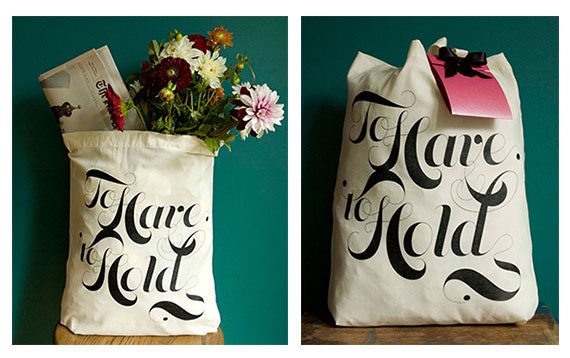
Don’t Forget About Your About Section
Your shop’s About section is another great place to communicate your brand story through images. A couple ideas:
-
Show real people. If you have additional shop members, use photos of actual people to represent members of your shop instead of illustrated avatars or photos of pets. Having photos of members helps your shop feel more personal and trustworthy.
-
Use the photo carousel. The photo carousel (the rotating images) in your About section can serve to support your shop narrative. Show photos of you (and your shop members, if applicable) making products and working. You can also show images of your workspace — whatever you think best communicates your shop’s story.
- Add a Shop Video. By adding a Shop Video to your About section you can give shoppers an even more intimate look at your products. Highlight your processes and inspiration in the video — hearing about your work directly from you can help build trust with buyers. Learn more about Shop Video.
*Offer ends February 28, 2024. Adobe Express subscription required. While supplies last. See redemption page for Adobe Terms
 Words by Taylor Combs
Words by Taylor Combs
